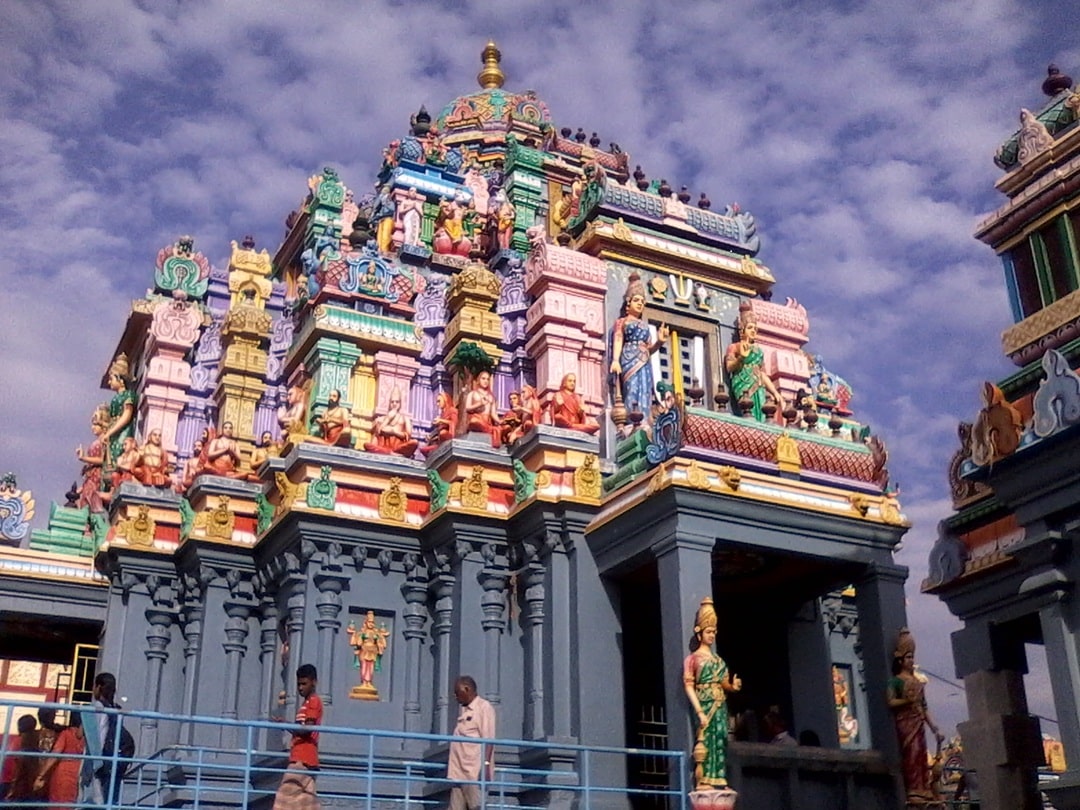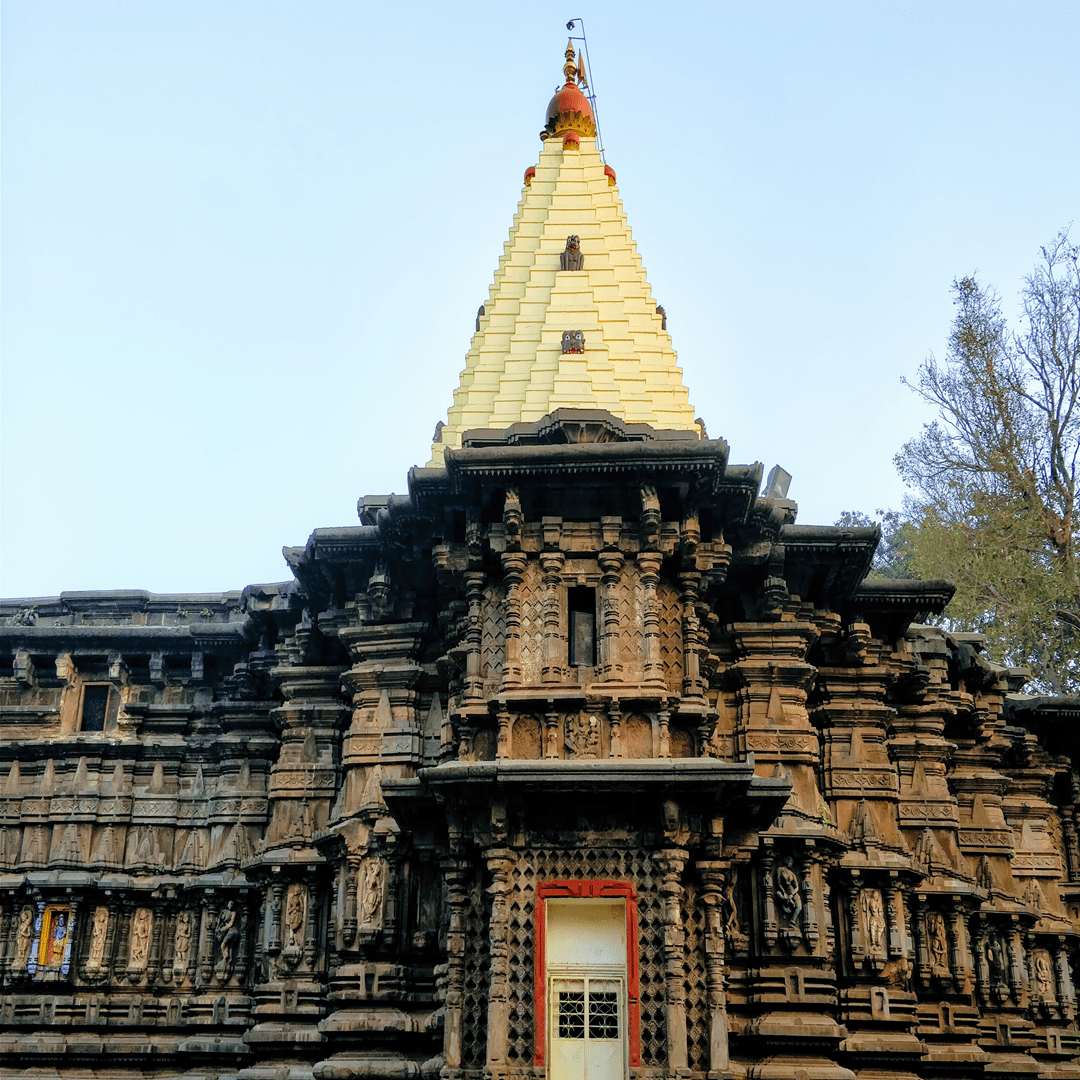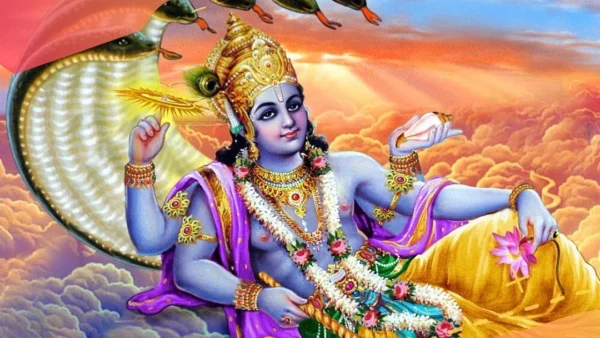Goddess Lakshmi - The Divine Mother of Wealth and Prosperity
Goddess Lakshmi, revered as Sri (The Auspicious One) and Mahalakshmi (The Great Goddess of Wealth), stands as one of the most beloved deities in Hinduism. As the consort of Lord Vishnu and the embodiment of divine abundance, she represents material and spiritual prosperity, fortune, beauty, and grace.
Introduction
As the eternal consort of Lord Vishnu, Goddess Lakshmi embodies the divine feminine principle of abundance, beauty, and prosperity. She is not merely the goddess of material wealth but represents all forms of prosperity - physical, mental, and spiritual. Known as the Mother of the Universe, she nurtures and sustains all creation with her boundless grace and compassion. Her worship brings both worldly success and spiritual elevation, making her one of the most widely venerated deities across Hindu traditions.
Physical Attributes & Iconography
Every aspect of Goddess Lakshmi's divine form carries profound spiritual symbolism:
The Divine Form
- Golden Complexion: Represents purity, prosperity, and the radiance of divine consciousness.
- Four Arms (Chaturbhuja): Symbolizes the four goals of human life - dharma (righteousness), artha (wealth), kama (desire), and moksha (liberation).
- Lotus Flowers: Held in her upper hands, representing purity, fertility, and spiritual power that remains untouched by material contamination.
- Abhaya Mudra: Right lower hand in blessing pose, granting fearlessness and protection.
- Varada Mudra: Left lower hand in boon-granting gesture, fulfilling devotees' wishes.
- Red and Gold Saree: Symbolizes activity, fertility, and prosperity.
- Jeweled Ornaments: Represent wealth, beauty, and divine splendor.
- Long Black Hair: Symbol of beauty, abundance, and the mystery of creation.
Sacred Symbols and Vehicles
- Lotus Seat (Padmasana): Represents purity and spiritual evolution rising from mundane existence.
- Elephants (Gaja Lakshmi): Symbol of royal power, wisdom, and abundant rainfall bringing prosperity.
- Owl (Uluka): Her vehicle representing wisdom, vigilance, and the ability to see in darkness.
- Gold Coins: Flowing from her hands, symbolizing material prosperity and generosity.
- Kalasha (Sacred Pot): Represents abundance and the womb of creation.
Sacred Names & Titles
Goddess Lakshmi is known by numerous names highlighting her various divine aspects:
- Sri — The auspicious one, embodiment of all prosperity
- Mahalakshmi — The great goddess of wealth and fortune
- Padma — The lotus goddess, symbol of purity and beauty
- Kamala — Another name for lotus, representing divine beauty
- Shree — Sacred syllable representing prosperity and auspiciousness
- Vishnu Priya — Beloved of Vishnu, the divine consort
- Rama — The enchanting one, source of all joy and pleasure
- Indira — The powerful one, queen of the gods
- Soudamini — The lightning goddess, brilliant and swift
- Bhargavi — Daughter of sage Bhrigu
- Sridevi — The divine goddess of prosperity
- Vaishnavee — Belonging to Vishnu, the supreme goddess
- Kamalasana — Seated on lotus, the pure one
- Padmalaya — Residing in lotus, the sacred abode
- Lokamata — Mother of the world, universal nurturer
Major Legends & Mythology
Birth from the Ocean of Milk (Samudra Manthan)
The most famous legend describes Lakshmi's emergence during the churning of the cosmic ocean by gods and demons. As various treasures arose from the ocean, Goddess Lakshmi appeared seated on a thousand-petaled lotus, radiating divine beauty and grace. She chose Vishnu as her eternal consort, symbolizing the union of consciousness (Vishnu) with creative energy and abundance (Lakshmi).
The Story of King Indradyumna
King Indradyumna was a great devotee of Lakshmi who lost all his wealth due to pride. Through sincere repentance and devotion, he regained not only material prosperity but also spiritual wisdom, teaching that true wealth comes from humility and devotion.
Lakshmi and the Sage's Curse
Once, Lakshmi was cursed by the sage Durvasa to be born on earth and experience separation from Vishnu. This led to various incarnations where she demonstrated that divine love transcends all circumstances, ultimately reuniting with her beloved in every lifetime.
The Tale of Alakshmi
Alakshmi, the goddess of misfortune and poverty, is sometimes described as Lakshmi's sister or shadow. This legend teaches that prosperity and poverty are two sides of existence, and devotion to Lakshmi transforms even misfortune into blessing.
The Eight Forms of Lakshmi (Ashta Lakshmi)
Goddess Lakshmi manifests in eight primary forms, each governing different aspects of prosperity and well-being:
1. Adi Lakshmi (Primordial Lakshmi)
Domain: Original form, source of all prosperity
Significance: Represents the eternal, unchanging aspect of divine abundance
2. Dhana Lakshmi (Wealth Lakshmi)
Domain: Material wealth, money, and financial prosperity
Significance: Bestows monetary abundance and removes financial difficulties
3. Dhairya Lakshmi (Courage Lakshmi)
Domain: Courage, strength, and valor
Significance: Grants bravery to face challenges and overcome obstacles
4. Gaja Lakshmi (Elephant Lakshmi)
Domain: Power, dignity, and royal prosperity
Significance: Bestows authority, leadership qualities, and abundant resources
5. Santana Lakshmi (Progeny Lakshmi)
Domain: Children, family, and continuity of lineage
Significance: Blesses with healthy children and harmonious family life
6. Veera Lakshmi (Heroic Lakshmi)
Domain: Strength in adversity and victory in battles
Significance: Provides strength to overcome enemies and challenges
7. Vidya Lakshmi (Knowledge Lakshmi)
Domain: Education, wisdom, and learning
Significance: Bestows knowledge, skills, and academic success
8. Vijaya Lakshmi (Victory Lakshmi)
Domain: Success, victory, and achievement of goals
Significance: Grants success in all endeavors and ultimate victory
Spiritual Significance & Philosophy
The Principle of Abundance
- Divine Prosperity: Lakshmi represents the principle that the universe is inherently abundant and that scarcity is an illusion born of ignorance.
- Balanced Wealth: True prosperity includes material comfort, emotional fulfillment, intellectual growth, and spiritual advancement.
- Generous Flow: Wealth is meant to flow like water, reaching all beings and returning to its source enriched.
- Sacred Responsibility: Material abundance carries the responsibility to share and serve others.
The Union of Consciousness and Energy
- Vishnu-Lakshmi Unity: Their eternal relationship symbolizes the perfect balance between consciousness (Vishnu) and creative power (Lakshmi).
- Spiritual Materialism: Material prosperity becomes sacred when approached with spiritual consciousness.
- Divine Feminine Power: Lakshmi represents the creative, nurturing aspect of divinity that manifests abundance.
The Law of Attraction and Gratitude
- Positive Consciousness: Lakshmi worship cultivates positive thinking and attracts beneficial circumstances.
- Gratitude Practice: Appreciation for existing blessings opens channels for greater abundance.
- Purification of Desire: Desires become purified and aligned with divine will through devotion.
Major Festivals & Observances
Diwali (Festival of Lights)
Timing: New moon day of Kartik month (October-November)
Significance: Most important Lakshmi festival, celebrating her return to earth
Observances: Lighting lamps, decorating homes, performing Lakshmi Puja, preparing sweets, exchanging gifts
Lakshmi Panchami
Timing: Fifth day of Shukla Paksha in various months
Significance: Dedicated to invoking Lakshmi's blessings for prosperity
Practices: Special puja, charity, feeding the poor, business inauguration
Akshaya Tritiya
Timing: Third day of Shukla Paksha in Vaishakha month
Significance: Day of inexhaustible prosperity and good fortune
Traditions: Gold purchases, new ventures, charity, Lakshmi worship
Varalakshmi Vratam
Timing: Friday before full moon in Shravana month
Significance: Special observance by married women for family prosperity
Rituals: Elaborate decoration, storytelling, group prayers, feast preparation
Kojagari Purnima
Timing: Full moon night in Ashwin month
Significance: Night when Lakshmi visits homes to bless devotees
Observance: Staying awake all night, playing games, preparing rice pudding
Sacred Mantras & Prayers
Maha Mantra
Om Shreem Mahalakshmyai Namaha
(The most powerful mantra for invoking Lakshmi's blessings and prosperity.)
Lakshmi Gayatri Mantra
Om Mahalakshmyai Cha Vidmahe Vishnu Patnyai Cha Dhimahi Tanno Lakshmi Prachodayat
Ashtalakshmi Stotram
Sumanasa Vandita Sundari Madhurascha Sura Gana Poojita Sheeghra Phalapradacha Jay Jay Hey Madhusudana Kamini Ashtalakshmi Sadaa Paalaya Maam
Mahalakshmi Ashtakam
Namastestu Mahamaye Shree Peethe Sura Poojite Shankha Chakra Gada Haste Mahalakshmi Namostute
Sri Suktam
Ancient Vedic hymn to Goddess Lakshmi, considered one of the most powerful prayers for prosperity:
Hiranyavarnam Harinim Suvarna Rajatasrajam Chandram Hiranmayim Lakshmim Jatavedo Ma Aavaha
Other Sacred Texts
- Lakshmi Sahasranama — Thousand names praising various aspects of the goddess
- Lakshmi Chalisa — Forty verses dedicated to Lakshmi's glory
- Kanakdhara Stotram — Composed by Adi Shankaracharya for material abundance
- Kanakamahalakshmi Stotram — Hymn for golden prosperity
Sacred Places & Temples
Major Lakshmi Temples
- Kolhapur Mahalakshmi (Maharashtra): One of the most famous Lakshmi temples, known as one of the Shakti Peethas
- Golden Temple, Vellore (Tamil Nadu): Sripuram, covered entirely in gold leaf
- Ashtalakshmi Temple, Chennai (Tamil Nadu): Dedicated to the eight forms of Lakshmi
- Mahalakshmi Temple, Mumbai (Maharashtra): Ancient temple on the seashore
Vishnu-Lakshmi Temples
- Tirupati Balaji (Andhra Pradesh): Venkateswara with Lakshmi, richest temple in the world
- Padmanabhaswamy Temple (Kerala): Vishnu reclining with Lakshmi
- Jagannath Puri (Odisha): Lakshmi worshipped alongside Jagannath
- Guruvayur Temple (Kerala): Krishna with Lakshmi
Shakti Peethas Associated with Lakshmi
- Kolhapur: Where Lakshmi's eyes are said to have fallen
- Kalighat, Kolkata: Associated with divine feminine energy
- Kamakhya, Assam: Powerful goddess temple
Worship Practices & Rituals
Daily Worship (Nitya Puja)
Morning Rituals:
- Clean and purify the worship space
- Light incense and oil lamps
- Offer fresh flowers, especially lotus and marigold
- Chant Lakshmi mantras and stotrams
- Offer sweets, fruits, and milk
Evening Worship:
- Light multiple lamps around the house
- Perform aarti with devotional songs
- Express gratitude for the day's blessings
- Distribute prasadam to family members
Special Rituals
Lakshmi Puja (Diwali):
- Preparation: Thorough cleaning and decoration of home
- Kalash Sthapana: Setting up sacred pot with water, coins, and mango leaves
- Rangoli: Creating beautiful patterns with colored powder
- Offerings: Gold, silver, new clothes, sweets, dry fruits
- Mantras: Continuous chanting of Lakshmi mantras
- Prasadam: Preparation and distribution of sacred food
Friday Worship:
- Friday is considered especially auspicious for Lakshmi worship
- Fast during the day and break with sattvic food
- Offer white flowers and perform abhishek with milk
- Read Lakshmi stories and sing devotional songs
Sacred Offerings
- Flowers: Lotus (most sacred), marigold, jasmine, roses
- Food: Sweet preparations, kheer, fruits, dry fruits, honey
- Precious items: Gold, silver coins, jewelry, silk clothes
- Natural items: Rice, turmeric, vermillion, betel leaves
- Lights: Oil lamps, ghee lamps, candles
Benefits of Lakshmi Devotion
Material Benefits
Financial Prosperity:
- Increase in income and wealth accumulation
- Success in business ventures and investments
- Relief from debt and financial difficulties
- Opportunities for career advancement
Abundance in All Forms:
- Good health and vitality
- Happy and harmonious relationships
- Comfortable living conditions
- Success in educational pursuits
Spiritual Benefits
Consciousness Transformation:
- Development of gratitude and appreciation
- Purification of desires and intentions
- Alignment with dharmic principles
- Experience of divine grace and protection
Inner Qualities:
- Enhancement of natural beauty and charm
- Development of generous and giving nature
- Cultivation of patience and wisdom
- Attainment of spiritual prosperity
Psychological Benefits
Mental Peace and Stability:
- Relief from anxiety about security and survival
- Confidence and optimism about the future
- Emotional balance and contentment
- Positive mindset and abundant thinking
Social Benefits:
- Respect and honor in society
- Harmonious family relationships
- Support from friends and community
- Opportunities for service and contribution
Modern Relevance & Contemporary Worship
Contemporary Applications
Lakshmi's principles remain highly relevant in modern life:
- Entrepreneurship: Invoking Lakshmi's blessings for business success and ethical prosperity
- Financial Planning: Applying principles of abundance and wise resource management
- Sustainable Living: Balancing material comfort with environmental consciousness
- Women Empowerment: Lakshmi as a symbol of independent feminine power and authority
Digital Age Devotion
- Virtual Temples: Online darshan and participation in temple rituals
- Digital Mantras: Smartphone apps for daily chanting and meditation
- E-commerce Blessings: Seeking Lakshmi's grace for online businesses
- Social Media Devotion: Sharing inspirational messages and festival celebrations
Global Influence
- International Business: Hindu entrepreneurs worldwide invoke Lakshmi's blessings
- Yoga and Meditation: Integration of abundance principles in wellness practices
- Cultural Festivals: Diwali celebrated globally as a festival of light and prosperity
- Artistic Expression: Modern interpretations in art, music, and literature
Scientific Correlation
- Positive Psychology: Lakshmi worship aligns with gratitude and abundance mindset research
- Neuroscience: Meditation and chanting produce measurable brain changes
- Economics: Principles of circulation and generous giving benefit economic systems
- Environmental Science: Sustainable abundance models for resource management
Conclusion
Goddess Lakshmi represents the divine principle that abundance is the natural state of existence. Her worship teaches that true prosperity encompasses not just material wealth but beauty, wisdom, strength, and spiritual fulfillment. Through devotion to Lakshmi, one learns to receive gracefully, share generously, and maintain the sacred flow of abundance in all aspects of life.
In today's world, where material success often comes at the cost of spiritual values, Lakshmi's worship provides the perfect balance. She shows that it is possible to enjoy material prosperity while maintaining spiritual integrity, to be successful while remaining humble, and to accumulate wealth while serving others.
The eight forms of Lakshmi remind us that prosperity has many faces - from the courage to face challenges to the wisdom that guides right action, from the wealth that provides security to the progeny that continues our legacy. True devotees of Lakshmi seek all these forms of abundance, creating lives of complete fulfillment.
Lakshmi's eternal partnership with Vishnu teaches the importance of balancing consciousness with creative power, awareness with action, and spiritual understanding with practical application. Her worship cultivates both inner richness and outer abundance, making life truly prosperous in every sense.
Om Shreem Mahalakshmyai Namaha — I bow to the great Goddess Lakshmi, the source of all prosperity, beauty, and grace, who blesses devotees with abundance in all forms and guides them toward ultimate fulfillment.









